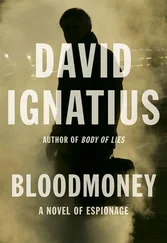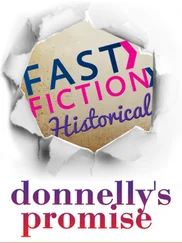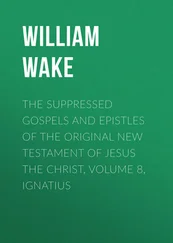Ignatius Donnelly - Antediluvian world
Здесь есть возможность читать онлайн «Ignatius Donnelly - Antediluvian world» весь текст электронной книги совершенно бесплатно (целиком полную версию без сокращений). В некоторых случаях можно слушать аудио, скачать через торрент в формате fb2 и присутствует краткое содержание. Жанр: Старинная литература, на русском языке. Описание произведения, (предисловие) а так же отзывы посетителей доступны на портале библиотеки ЛибКат.
- Название:Antediluvian world
- Автор:
- Жанр:
- Год:неизвестен
- ISBN:нет данных
- Рейтинг книги:5 / 5. Голосов: 1
-
Избранное:Добавить в избранное
- Отзывы:
-
Ваша оценка:
- 100
- 1
- 2
- 3
- 4
- 5
Antediluvian world: краткое содержание, описание и аннотация
Предлагаем к чтению аннотацию, описание, краткое содержание или предисловие (зависит от того, что написал сам автор книги «Antediluvian world»). Если вы не нашли необходимую информацию о книге — напишите в комментариях, мы постараемся отыскать её.
Antediluvian world — читать онлайн бесплатно полную книгу (весь текст) целиком
Ниже представлен текст книги, разбитый по страницам. Система сохранения места последней прочитанной страницы, позволяет с удобством читать онлайн бесплатно книгу «Antediluvian world», без необходимости каждый раз заново искать на чём Вы остановились. Поставьте закладку, и сможете в любой момент перейти на страницу, на которой закончили чтение.
Интервал:
Закладка:
It is interesting to inquire into the various articles which have been used in different countries and ages as money. The following is a table of some of them:
Articles of Utility.
-----------------------------+ | India | Cakes of tea. |
-----------------------------+ | China | Pieces of silk. |
-----------------------------+ | Abyssinia | Salt. |
-----------------------------+ | Iceland and Newfoundland | Codfish. |
-----------------------------+ | Illinois (in early days) | Coon-skins. |
-----------------------------+ | Bornoo (Africa) | Cotton shirts. |
-----------------------------+ | Ancient Russia | Skins of wild animals. |
-----------------------------+ | West India Islands (1500) | Cocoa-nuts. |
-----------------------------+ | Massachusetts Indians | Wampum and musket-balls. |
-----------------------------+ | Virginia (1700) | Tobacco. |
-----------------------------+ | British West India Islands | Pins, snuff, and whiskey. |
-----------------------------+ | Central South America | Soap, chocolate, and eggs. |
-----------------------------+ | Ancient Romans | Cattle. |
-----------------------------+ | Ancient Greece | Nails of copper and iron. |
-----------------------------+ | The Lacedemonians | Iron. |
-----------------------------+ | The Burman Empire | Lead. |
-----------------------------+ | Russia (1828 to 1845) | Platinum. |
-----------------------------+ | Rome (under Numa Pompilius) | Wood and leather. |
-----------------------------+ | Rome (under the Caesars) | Land. |
-----------------------------+ | Carthaginians | Leather. |
-----------------------------+ | Ancient Britons Cattle, | slaves, brass, and iron. |
-----------------------------+ | England (under James II.) | Tin, gun-metal, and pewter. |
-----------------------------+ | South Sea Islands | Axes and hammers. |
-----------------------------+
Articles of Ornament.
----------------+ | Ancient Jews | Jewels. |
----------------+ | The Indian Islands and Africa | Cowrie shells, |
----------------+
Conventional Signs.
----------------------------+ | Holland (1574) | Pieces of pasteboard. |
----------------------------+ | China (1200) | Bark of the mulberry-tree. |
----------------------------+
It is evident that every primitive people uses as money those articles upon which they set the highest value—as cattle, jewels, slaves, salt, musket-balls, pins, snuff, whiskey, cotton shirts, leather, axes, and hammers; or those articles for which there was a foreign demand, and which they could trade off to the merchants for articles of necessity—as tea, silk, codfish, coonskins, cocoa-nuts, and tobacco.
Then there is a later stage, when the stamp of the government is impressed upon paper, wood, pasteboard, or the bark of trees, and these articles are given a legal-tender character.
When a civilized nation comes in contact with a barbarous people they seek to trade with them for those things which they need; a metal-working people, manufacturing weapons of iron or copper, will seek for the useful metals, and hence we find iron, copper, tin, and lead coming into use as a standard of values—as money; for they can always be converted into articles of use and weapons of war. But when we ask bow it chanced that gold and silver came to be used as money, and why it is that gold is regarded as so much more valuable than silver, no answer presents itself. It was impossible to make either of them into pots or pans, swords or spears; they were not necessarily more beautiful than glass or the combinations of tin and copper. Nothing astonished the American races more than the extraordinary value set upon gold and silver by the Spaniards; they could not understand it. A West Indian savage traded a handful of gold-dust with one of the sailors accompanying Columbus for some tool, and then ran for his life to the woods lest the sailor should repent his bargain and call him back. The Mexicans had coins of tin shaped like a letter T. We can understand this, for tin was necessary to them in hardening their bronze implements, and it may have been the highest type of metallic value among them. A round copper coin with a serpent stamped on it was found at Palenque, and T-shaped copper coins are very abundant in the ruins of Central America. This too we can understand, for copper was necessary in every work of art or utility.
All these nations were familiar with gold and silver, but they used them as sacred metals for the adornment of the temples of the sun and moon.
The color of gold was something of the color of the sun’s rays, while the color of silver resembled the pale light of the moon, and hence they were respectively sacred to the gods of the sun and moon. And this is probably the origin of the comparative value of these metals: they became the precious metals because they were the sacred metals, and gold was more valuable than silver—just as the sun-god was the great god of the nations, while the mild moon was simply an attendant upon the sun.
The Peruvians called gold “the tears wept by the sun.” It was not used among the people for ornament or money. The great temple of the sun at Cuzco was called the “Place of Gold.” It was, as I have shown, literally a mine of gold. Walls, cornices, statuary, plate, ornaments, all were of gold; the very ewers, pipes, and aqueducts—even the agricultural implements used in the garden of the temple—were of gold and silver.
The value of the jewels which adorned the temple was equal to one hundred and eighty millions of dollars! The riches of the kingdom can be conceived when we remember that from a pyramid in Chimu a Spanish explorer named Toledo took, in 1577, $4,450,284 in gold and silver.
(“New American Cyclopaedia,” art. American Antiquities.) The gold and silver of Peru largely contributed to form the metallic currency upon which Europe has carried on her commerce during the last three hundred years.
Gold and silver were not valued in Peru for any intrinsic usefulness; they were regarded as sacred because reserved for the two great gods of the nation. As we find gold and silver mined and worked on both sides of the Atlantic at the earliest periods of recorded history, we may fairly conclude that they were known to the Atlanteans; and this view is confirmed by the statements of Plato, who represents a condition of things in Atlantis exactly like that which Pizarro found in Peru.
Doubtless the vast accumulations of gold and silver in both countries were due to the fact that these metals were not permitted to be used by the people. In Peru the annual taxes of the people were paid to the Inca in part in gold and silver from the mines, and they were used to ornament the temples; and thus the work of accumulating the sacred metals went on from generation to generation. The same process doubtless led to the vast accumulations in the temples of Atlantis, as described by Plato.
Now, as the Atlanteans carried on an immense commerce with all the countries of Europe and Western Asia, they doubtless inquired and traded for gold and silver for the adornment of their temples, and they thus produced a demand for and gave a value to the two metals otherwise comparatively useless to man—a value higher than any other commodity which the people could offer their civilized customers; and as the reverence for the great burning orb of the sun, master of all the manifestations of nature, was tenfold as great as the veneration for the smaller, weaker, and variable goddess of the night, so was the demand for the metal sacred to the sun ten times as great as for the metal sacred to the moon. This view is confirmed by the fact that the root of the word by which the Celts, the Greeks, and the Romans designated gold was the Sanscrit word karat, which means, “the color of the sun.” Among the Assyrians gold and silver were respectively consecrated to the and moon precisely as they were in Peru. A pyramid belonging to the palace of Nineveh is referred to repeatedly in the inscriptions. It was composed of seven stages, equal in height, and each one smaller in area than the one beneath it; each stage was covered with stucco of different colors, “a different color representing each of the heavenly bodies, the least important being at the base: white (Venus); black (Saturn); purple (Jupiter); blue (Mercury); vermillion (Mars); silver (the Moon); and gold (the Sun).” (Lenormant’s “Ancient History of the East,” vol. i., p.
Читать дальшеИнтервал:
Закладка:
Похожие книги на «Antediluvian world»
Представляем Вашему вниманию похожие книги на «Antediluvian world» списком для выбора. Мы отобрали схожую по названию и смыслу литературу в надежде предоставить читателям больше вариантов отыскать новые, интересные, ещё непрочитанные произведения.
Обсуждение, отзывы о книге «Antediluvian world» и просто собственные мнения читателей. Оставьте ваши комментарии, напишите, что Вы думаете о произведении, его смысле или главных героях. Укажите что конкретно понравилось, а что нет, и почему Вы так считаете.












